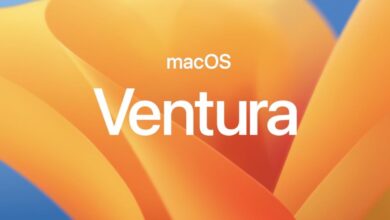Slack smarter, not harder with SlackGPT

Slack has unveiled its latest foray into the world of AI with SlackGPT. At the recent Salesforce World Tour event in New York City, Slack revealed its latest evolution: an AI-powered user experience that will enhance information accessibility and streamline workflow processes.
It is worth noting that these announcements are not yet fully implemented, and many of the mentioned features are still in development. According to Rob Seaman, Slack aims to incorporate AI in multiple ways throughout the platform, rather than simply adding a superficial AI overlay. This approach began with a recent partnership with OpenAI to introduce the ChatGPT app into Slack, which represents just the first step of a broader AI vision for the platform. Currently, this feature is only available in beta testing.
The latest announcement from Slack involves a number of new integrations, one of which is SlackGPT, a customized generative AI tool that is integrated into the Slack platform. Users and developers can leverage this tool to create AI-powered experiences. The data and content available on Slack serve as a foundation for developing models that relate to the platform.
“We think Slack has a unique advantage when it comes to generative AI. A lot of the institutional knowledge on every topic, team, work item and project is already in Slack through the messages, the files and the clips that are shared every day,” Seaman stated.
SlackGPT has been revealed on the Salesforce World Tour event – Image courtesy of Salesforce
What SlackGPT has to offer?
With the addition of SlackGPT to its Partner ecosystem and platform, Slack users now have a wide array of choices for integrating AI into their workflows. According to him, Slack is currently approaching this integration in three distinct ways.
“For starters, Slack is going to bring AI natively into the user experience with SlackGPT to help customers work faster, communicate better, learn faster, etc. And an example of that is AI-powered conversation summaries and writing assistance for composition that’s going to be directly available in Slack,” he stated.
One example of how SlackGPT could be utilized is by enabling employees to quickly get up to speed on a lengthy conversation thread without having to read through each individual message. In addition, SlackGPT could be used to generate content for linked Slack applications or to create messages within the platform. Although writing a Slack message manually might seem simpler, leveraging generative AI could be beneficial when crafting content for Slack Canvas, particularly as part of an automated workflow.
Developers can also take advantage of Slack’s generative AI capabilities by integrating AI steps into workflows, enabling them to leverage external applications and large language models to create their own AI-driven experiences. Recently, Slack made its updated developer experience generally available, which should simplify the process of incorporating generative AI into the platform in personalized ways, according to Seaman.
“So this gives us the foundation to give users choice and flexibility to bring AI into their work in their business whenever they’re ready, and however they like. We’ve got 2600 apps in the ecosystem right now, which includes a lot of the leading LLMs, and we see a lot of customers already choosing to integrate generative AI into Slack themselves,” he stated.
SlackGPT is able to summarize the messages you have missed in your workplace – Image courtesy of Slack
Einstein meets Slack
In addition to SlackGPT, EinsteinGPT, Salesforce’s own flavor of generative AI announced in March, will also be integrated into Slack. This functionality will allow employees to ask questions about Salesforce content directly within the Slack platform, such as identifying users who are likely to churn or accounts that are most likely to make a purchase. Ultimately, this integration is focused on creating a more seamless connection between Salesforce and Slack, following Salesforce’s $27 billion acquisition of Slack a few years ago.
“Slack is really becoming the conversational interface for Salesforce. So that’s bringing those EinsteinGPT-powered insights from the real-time customer data that exists in Salesforce into Slack to enrich every team’s understanding of the customer,” the company stated.
Like many other generative AI tools being integrated into enterprise software, Slack is announcing these capabilities well in advance of their release. However, these announcements provide customers with a glimpse into the future and illustrate how AI could transform Slack in the years to come.
While SlackGPT and EinsteinGPT integration is still under development, developers can currently create custom integrations with various LLMs. In addition, Workflow Builder with SlackGPT AI connectors, which will enable customers to quickly connect ChatGPT or Claude to a workflow or build custom connectors that plug in their own LLMs, will be available in the summer.
Thank you for being a Ghacks reader. The post Slack smarter, not harder with SlackGPT appeared first on gHacks Technology News.
gHacks Technology News

